Currently, I am using imread to read the image as follows. Matlab's detectSURFFeatures function only works on greyscale images.
I = rgb2gray( imread( '434.jpg' ) );
You can run this line to get the SURF features.
points = detectSURFFeatures( I );
You can plot the surf features using the following.
imshow( I );
hold on;
plot( point.selectStrongest(10) );
hold off;
Here is the visualization of the image I worked with.

This printing the points object, you can get the following properties showing 41 features.
Scale: [41x1 single]
SignOfLaplacian: [41x1 int8]
Orientation: [41x1 single]
Location: [41x2 single]
Metric: [41x1 single]
Count: 41
If you have all the grayscale images stored in a cell object called cellimg (one cell element for each image), you can run detectSURFFeatures on each one as follows.
cellsurf = cellfun( @(I) detectSURFFeatures( I ), cellimg, 'UniformOutput', false );
Each element of cellsurf will contain SURF points. Since you want a set of distinctive and fixed features that will identify each image, you can select the strongest points on each image in cellsurf. You can either use the top n number of features or set n = min( points ). Calculate the min number of features using the following code.
n = min( cellfun( @(S) S.Count, cellsurf ) );
Then you can select the strongest points by running selectStrongest on each cell in cellsurf.
F = cellfun( @(S) S.selectStrongest( n ), cellsurf, 'UniformOutput', false);
The variable F will contain a constant set of features. You can change n accordingly to change the number of strongest features you want. To match two sets of features, you can use the builtin matchFeatures function.
Notes
- If you need more features, you can specify a different 'MetricThreshold' parameter when calling the
detectSURFFeatures function.
- You can use other feature algorithms instead of SURF by using the functions:
detectBRISKFeatures, detectFASTFeatures, detectHarrisFeatures, detectMinEigenFeatures, detectMSERFeatures
